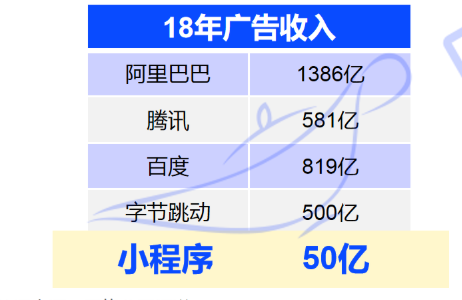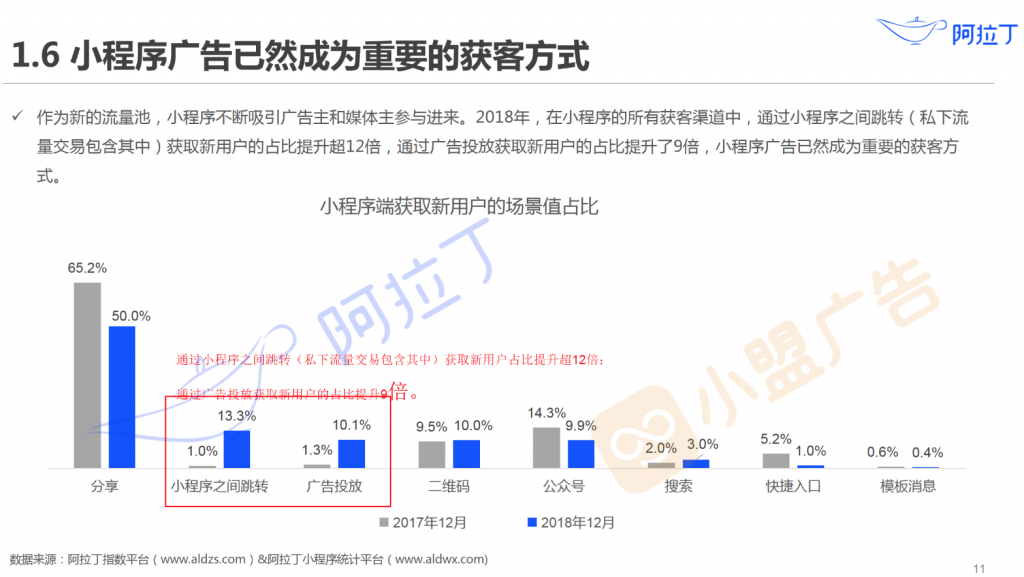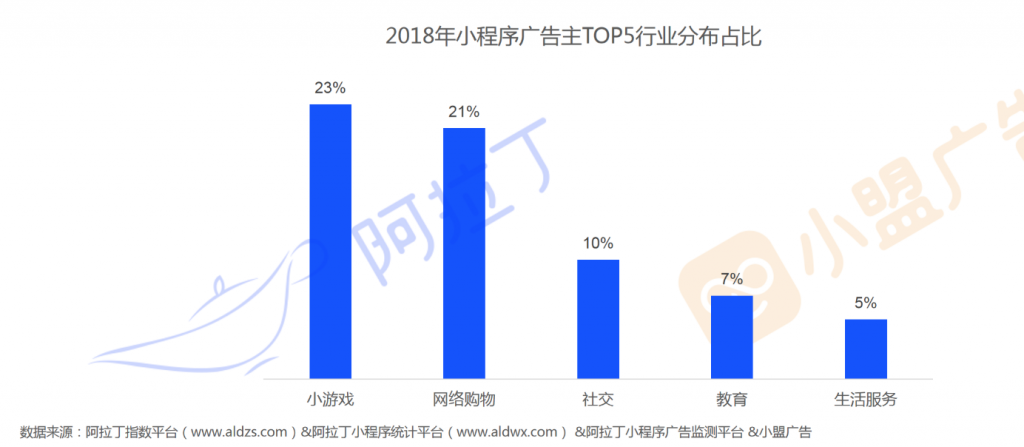Tencent reported their latest first-quarter earnings today, despite exceeding estimates. Although user growth has remained relatively stable, the trend of declining revenue from the online gaming sector continues. In fact, it represents slowest revenue growth since the IPO launch in 2004. Given this, we expect to see the source of revenue coming from social ads on WeChat in the future.

One of Tencent’s ad offerings that are increasingly on the radar is their Mini Programs ad, which is projected to reach about $22 billion (RMB150 billion) in 2022, according to Aladdin, a leading WeChat Mini Programs analytics tool. By drawing data from its own monitoring platform, interviews with 135 advertisers, media and third-party agencies, the Aladdin published the first report on the Mini Programs Ads in China, on May 6, attempting to give an overview of the marketplace.
According to their research, The ‘app within an app’ has served as an alternative to a stand-alone app as the cost of new user acquisition has become increasingly more expensive. Advertisers gained a lot of traffic and acquired new users at a low cost from WeChat, but there is simply not enough data to draw an accurate user profile. Below, we share some of the key takeaways from the report on this ad offering.

50 percent of user acquisition on a Mini Programs still comes from social sharing, but as ads start to take effect, the usage increased nine percent.

Right now WeChat Mini Programs Ad is still at the start of its growth.

By combining CPM (cost per thousand impressions), CPC (cost per click), CPA (cost pre-authorization), meaning a user agrees to let a Mini Program collect their information (user name, location, contact, etc.), and CPS (cost of the sold merchandise), WeChat is able to measure the success rate of the user journey from seeing an ad to possibly purchasing a product, resulting in a clear map of the return on investment.

Motivated by immediate transaction value on WeChat, the biggest advertisers on Mini Programs are e-commerce (21%) and Mini Game (23%) companies.

Banner and video ads are still the two most common ad format.
What the future could be like?#
- According to the report, ad forms on WeChat will be completely dominated by Mini Programs as users demand more interactive ad formats.
- SEO and SEM will be increasingly a strong focus to make searches easier on Mini Programs.
- O2O will become the main focus, more online ads will lead to in-store traffic.
Want to read more about WeChat Moments ads? Check out our WeChat edition newsletter – a weekly briefing on all things WeChat, featuring the latest news, campaigns, reports, case studies & events.
